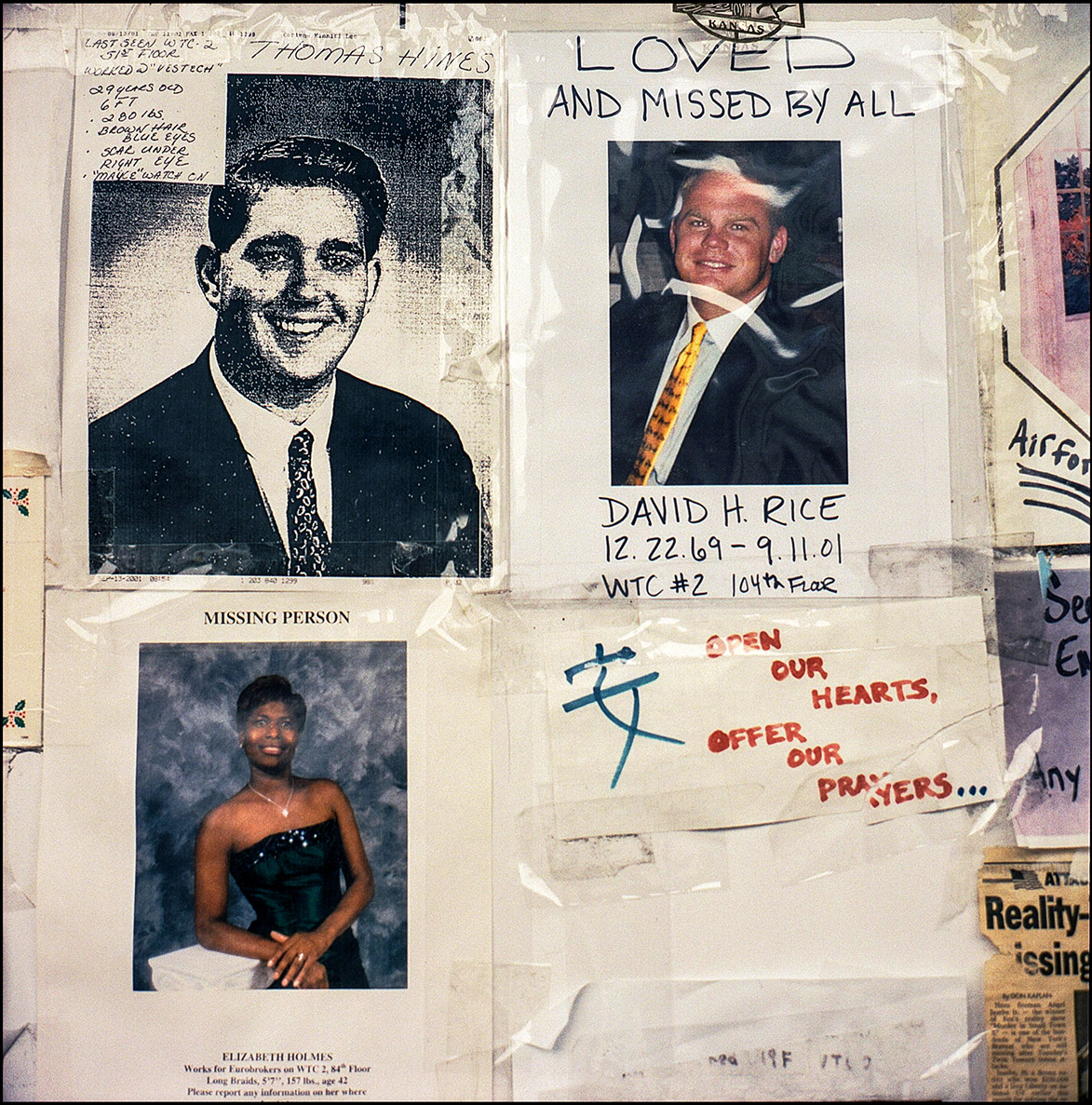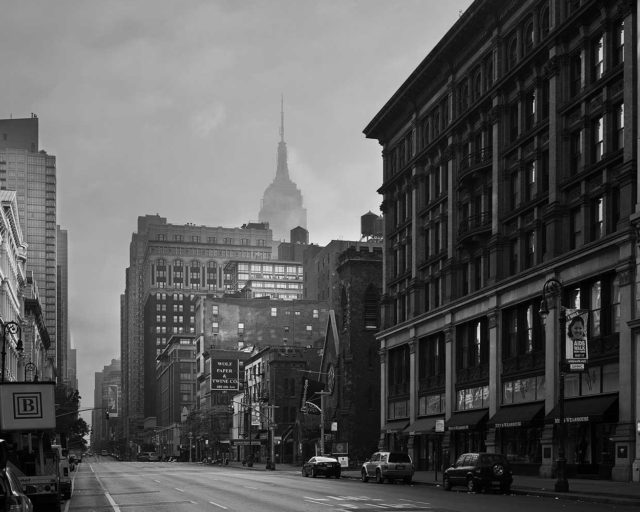Steve Pyke, Missing, September–November, 2001
The day after, the streets were empty. From 14th Street down, east and west, the police patrolled. If you lived below 14th Street, you needed to show proof of your address to be allowed home. Few people walked the streets, fear permeated ordinary habits, and no ambulances screamed up the avenues from the pit, though some sped down, and there were fire trucks. For a while, fires smoldered on the ground, burning the soles of rescuers’ shoes and the paws of search-and-rescue dogs. The fumes were poisonous and deadly, though New Jersey’s governor, Christine Todd Whitman, told us it was safe. She left office that same year.
Wounded people, survivors, were expected and awaited. But there were hardly any the first day, then fewer the next. Families and friends hoped and waited, and grew desperate. Time passed, precious days. People hoped there might be a miracle—my child, my spouse, brother, sister would be pulled from under the ruins. They waited, while hope evanesced. Soon, terror and grief overwhelmed every one of them.
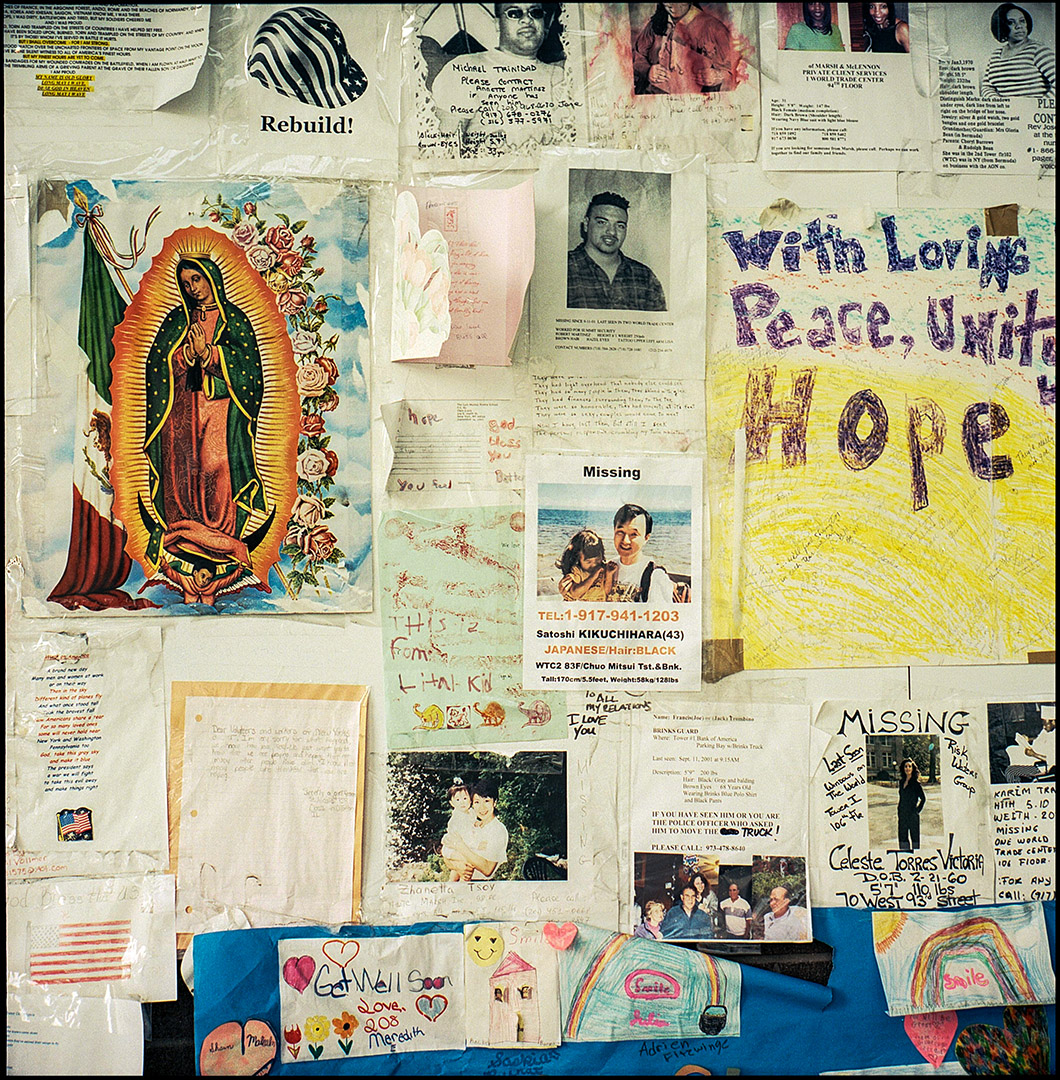
A profusion of 8-by-10-inch posters, hundreds of them, thousands of images, appeared around the city, taped to chain-link fences, stapled and tacked onto community bulletin boards, on school and church walls; Trinity Church, near the site of the disaster, and Grace Church were festooned. The posters hung on fences and were propped on tables. They were typed, handwritten and -drawn, drawn with crayons or ballpoints, some on board, most on paper, with a name and picture, sometimes a more elaborate description, or just a scribbled sentence: “Please, have you seen. . .”

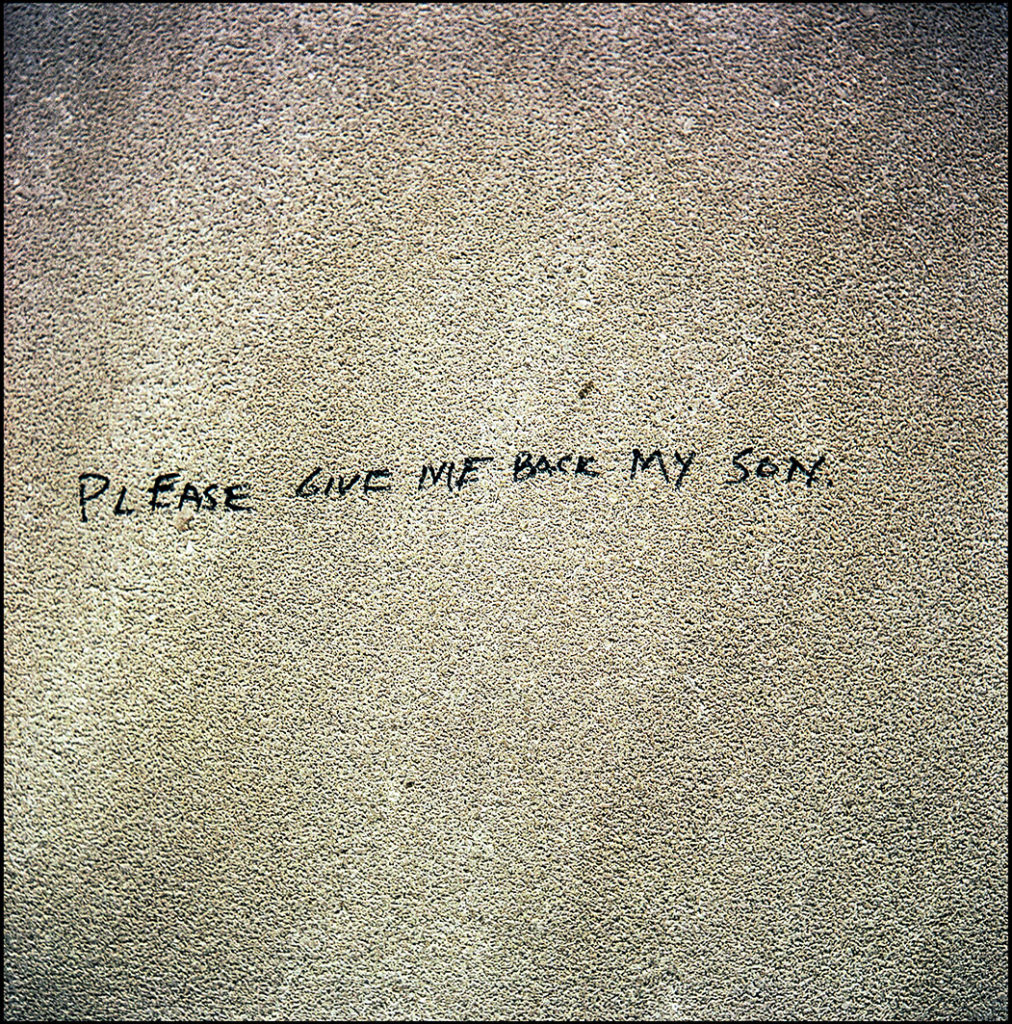
Steve Pyke didn’t print the photographs he took of the 9/11 posters then. “I didn’t even look at the work at all until recently,” he said, and this is their first publication. The 9/11 posters confirmed a gruesome reality: 2,763 individual deaths in the towers, including 343 firefighters and paramedics, twenty-three New York City police officers, and thirty-seven Port Authority police officers. The posters told us these were not anonymous victims. Each person was wanted.
Plain and startling, a plea written by hand with a black marker on a concrete wall, “PLEASE GIVE ME BACK MY SON,” appeals to God or a higher power. The wish registers a pain impossible to describe, retaining its anguished relevance, since every single day wars and illness take sons and daughters.
The photograph of “MISSING FROM TOWER 1 / 97th FLOOR / Please Help Searc. . . / Thank You!” displays this and other posters, row under row, respectfully. All sit neatly side by side, an accumulation of faces, some big images, some small, in color or black and white. “MISSING” at the top of some. Or the name of the person. Each description is carefully wrought to bring them to life, to encourage the search for them. “Wearing docker pants—grey pullover.”


On one poster, a single firefighter wears his uniform and cap; it appears to be an official portrait. On the day, firefighters raced to the site and ran up staircases, like scaling a mountain, going up while people ran down, trying to escape. The firefighters kept going up, which their job required, but their eventual sacrifice of life stunned New Yorkers. Many of the posters honored them, schoolchildren thanked them. Later, downtown firehouses—their firefighters were the first to arrive—hung permanent plaques honoring their dead colleagues.
There are differences among the posters—the people’s faces, design, contents—but the same fate overwhelms any differences. Looking at them back then, I had to turn away, they were heartbreaking. Many people had been photographed smiling—of course, we often smile for photographs—so the juxtaposition of a happy past with a future to a terrible present was immensely disturbing.
Hope was lost, and the posters yellowed and faded; weathered, they looked ragged like grieving faces. They transformed into tributes, not “have you seen my. . . .” but entreaties to remember them.

Pyke didn’t publish his photographs then, because “it was such an awful time, and was followed so quickly by knee-jerk reactions, not just in government but across the land. I guess I couldn’t face them.” One of these “knee-jerk reactions” was to memorialize, instantly. The clamor was loud. For almost ten years, fierce arguments about an eventual memorial shadowed the tragedy. These posters should have been the memorial, I thought then and now. And the beam of light, like a tower, emanating from the site every 9/11—it could have memorialized them with its impermanence.
Twenty years later, the posters are still hard to face. Time is its own demiurge, and events since—historic shifts, environmental shocks, new movements—affect seeing them now. After 9/11, there came more disasters, specifically the US’s preemptive war against Iraq. That huge, human-made destruction continues unsettling countries, claiming lives, and treasure.
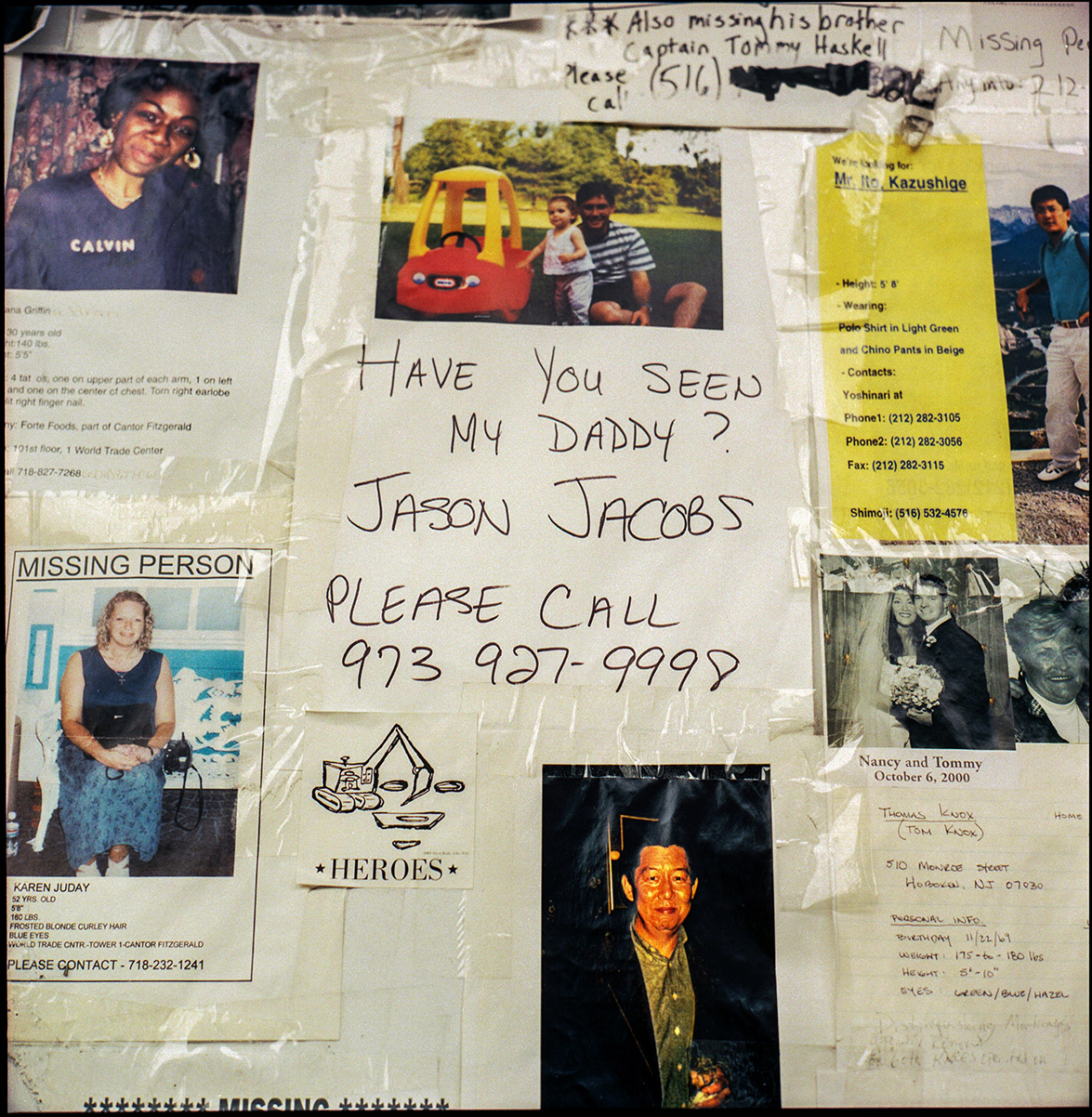
Courtesy the artist
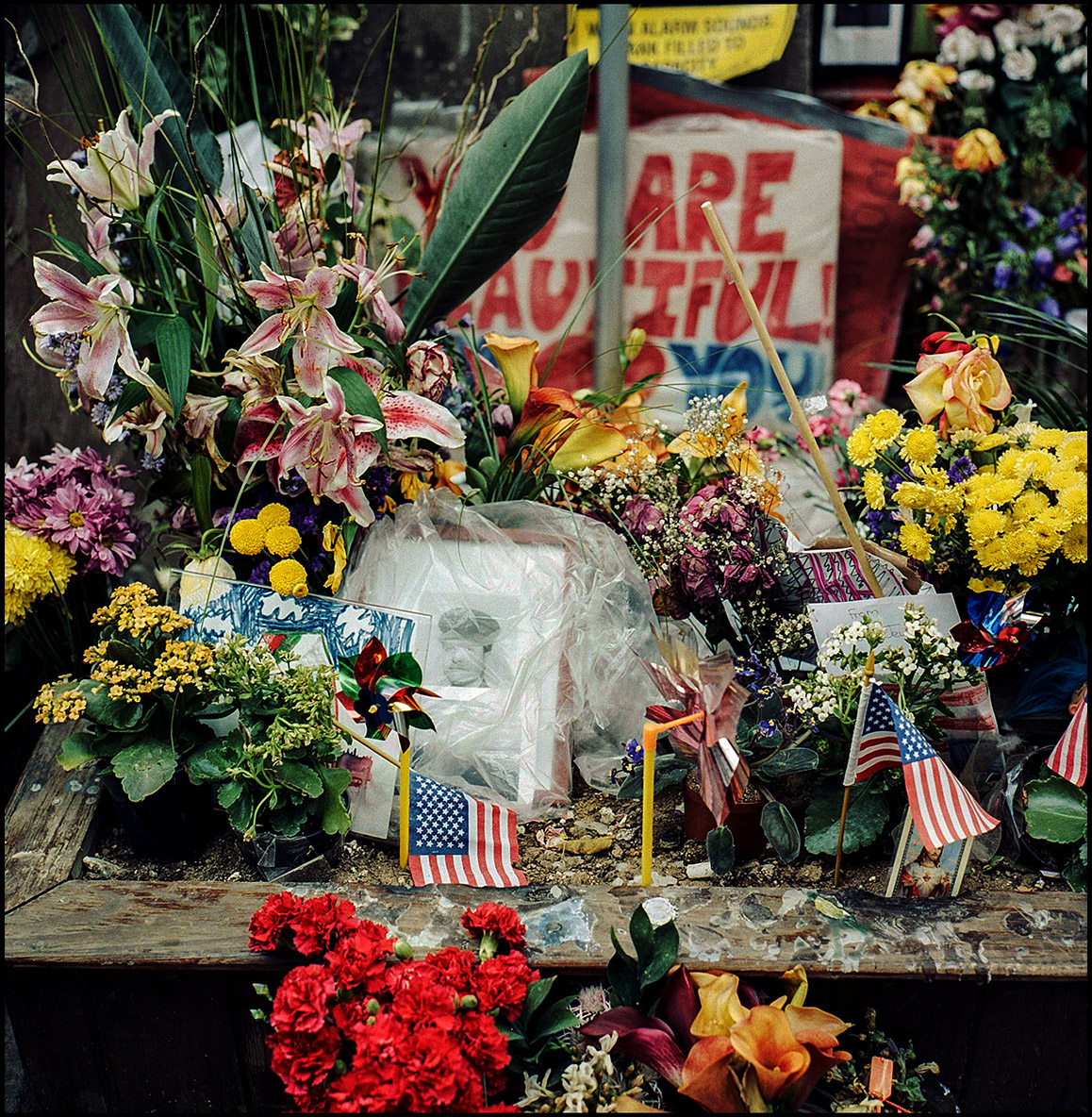
All disasters have their own faces, though death is faceless, and loss is loss everywhere. Still, the posters’ impact survives the event. They locate a moment in time that seems to have changed everything. And, on this twentieth anniversary, with the Taliban recapturing Afghanistan, history repeats itself, with differences, or erases itself, but the irony is killing.










